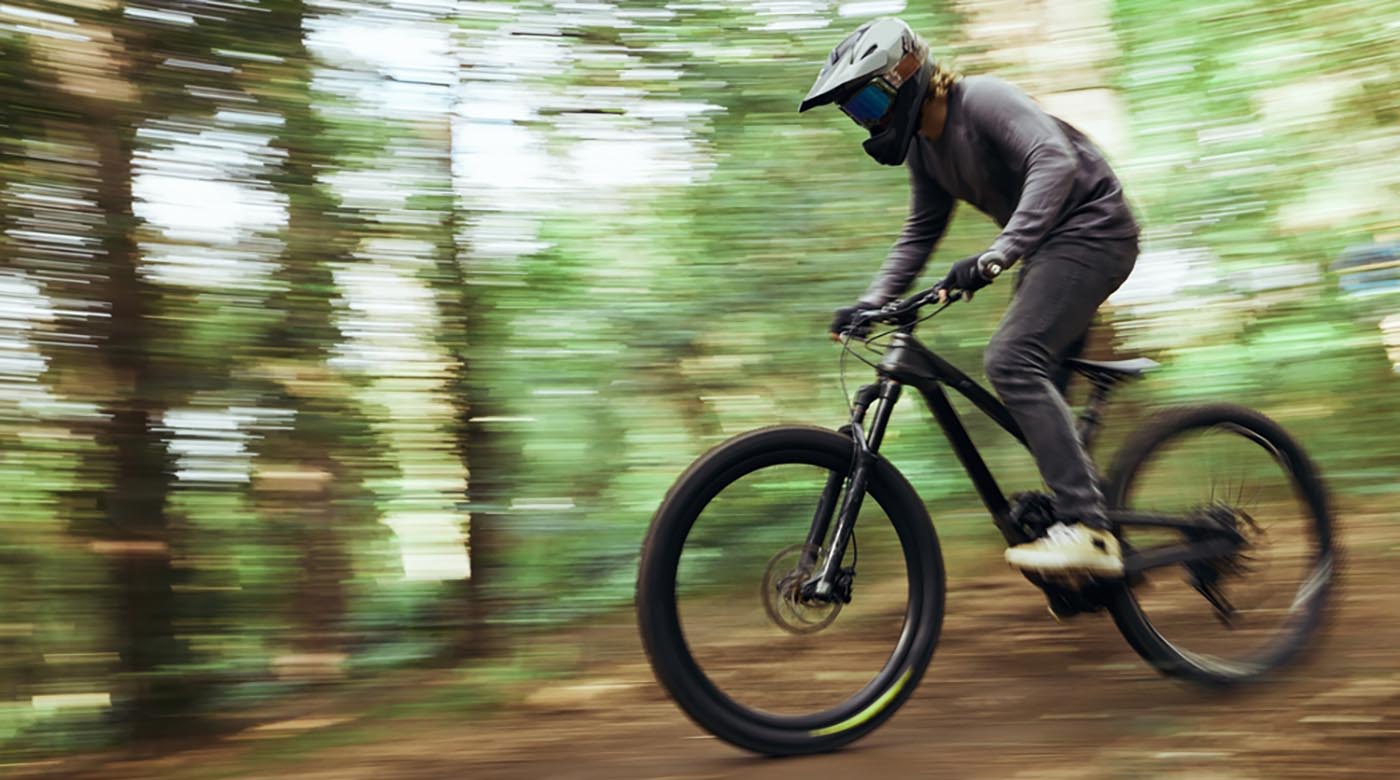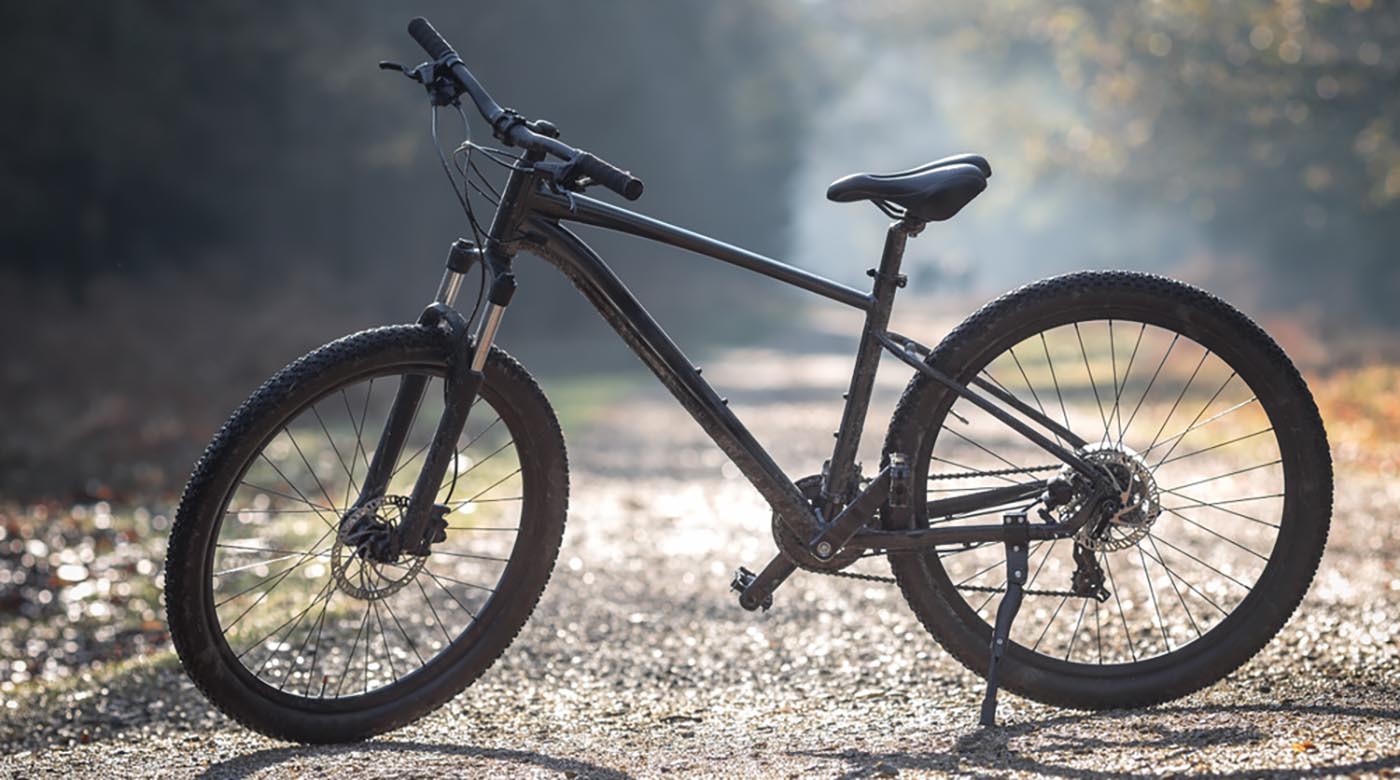PeopleImages/shutterstock.com
Size matters when choosing a mountain bike. Your height and proportions determine how large a bike you need, and the traditional rules for selecting a bike size may not apply to mountain biking. That’s because mountain bikes have specific features designed to help you climb steep hills. They have complex geometrical proportions to ensure an efficient and comfortable ride. If you’re wondering, what size mountain bike do I need? Use our sizing guide to find the perfect match.
Mountain Bike Sizing: The Ultimate Guide
The most important factor to consider is your height. Mountain bikes have low handlebars to help you change position when climbing. You need to be able to reach the bars by leaning over with your back arched. You should also be able to stand comfortably over the frame when you’re not seated, and your legs need to extend fully when pedaling.
Mountain bike sizes typically range from XS to XXL or more. The lengths of individual components may vary from brand to brand, but the geometry generally remains the same from size to size, the main difference being the wheelbase. Larger mountain bikes are longer and adjusted for the person’s height when leaning over the handlebars.
Choose a size based on your height:
-
4' 10" - 5' 2" – XS
-
5' 3" - 5' 6" – S
-
5' 7" - 5' 10" – M
-
5' 11" - 6' 1" – L
-
6' 2" - 6' 4" – XL
-
Over 6' 4" – XXL
Get on the bike to ensure you can comfortably reach the bars, pedals, and ground. Adjust the seat height if you can’t stand to get on and off the bike easily. If you fall between sizes, you may need to go up or down a size.
When to Upgrade to a Larger Size
If your torso is long and your legs are short for your height, going up a size extends the frame length and reach, helping you extend fully when reaching the handlebars.
When to Downgrade to a Smaller Size
If you have long legs and a short torso, try going down a size and raising the seat height to fully extend your legs when pedaling and to keep the handlebars within reach.
Use Bluetooth Bike Helmets to Navigate Hands-Free
HelgaQ/shutterstock.com
Mountain Biking Essentials
Once you’ve chosen the best size for your needs, complete your experience by wearing the proper mountain biking gear. Biking up or down hill and over rugged terrain is the most challenging form of cycling, and features an increased risk of accidents, falls, and injuries.
You’ll need a half-face helmet to protect your head and goggles to see clearly if you’re biking through mud, dirt, or bad weather. Choose the correct size based on the circumference of your head and ensure it doesn’t move when properly fastened.
Mountain biking is better (and safer) riding in a group. Your fellow cyclists can help you adjust your stance based on the terrain, alert you to potential hazards, and give real-time feedback on your position.
Pair your helmet with the Cardo Packalk Outdoor to communicate hands-free on the trail. You can link up to 15 units with an expansive rider-to-rider range to keep everyone connected. Dynamic Mesh Communication (DMC) won’t disconnect if you change formation and will reconnect automatically when in range. Just speak into the headset to ask for help or give a command without taking your eyes off the road or your hands off the handlebars. Wear gloves to keep a firm grip on the handlebars and mud-ready boots or clip-in shoes with treads to keep your feet on the pedals.

Rocksweeper/shutterstock.com
Find a Bicycle That Fits to Stay Safe
Using the wrong-sized bike can be uncomfortable and dangerous, overexerting your muscles and increasing your risk of accidents. Practice standing on the pedals as if you were climbing. Keep your back arched and horizontal to maintain good form. A few minor adjustments can make all the difference when learning how to ride.





